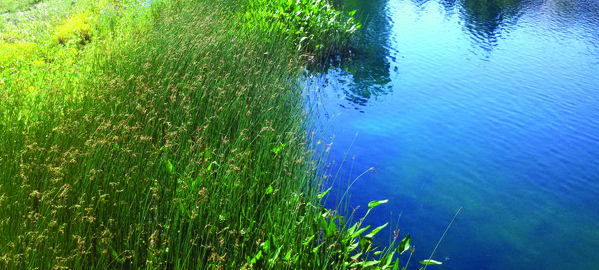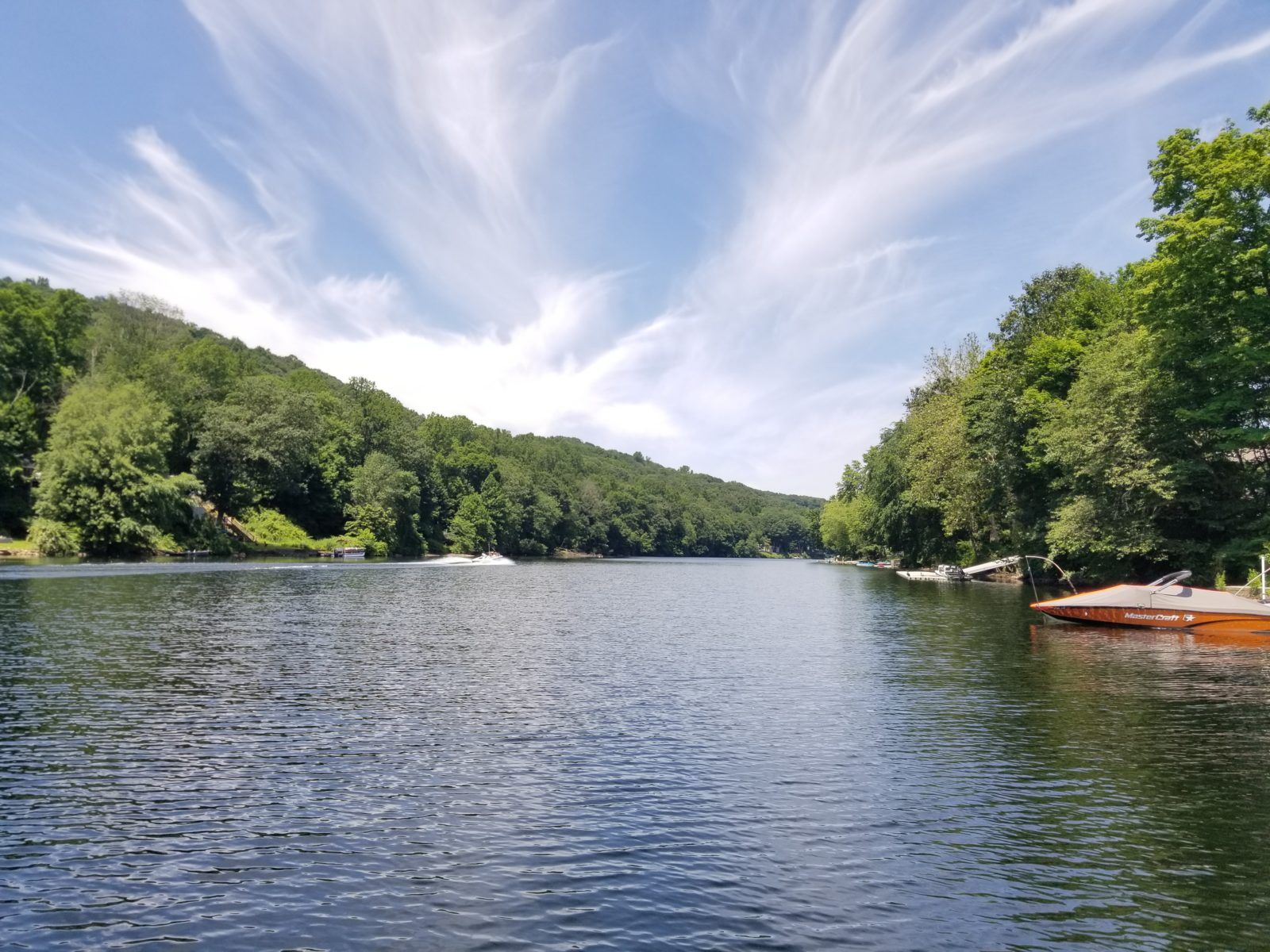Erosion & Beneficial Buffers: Like Sands Through the Hourglass
October 10th, 2017
Written by Industry Expert Gavin Ferris, Ecologist
 It is often remarked upon how adept beavers are at creating their own aquatic habitat, but in my observation muskrats are nearly their equal in this regard. While beavers endeavor to turn every stream into a pond and every pond into a lake, muskrats seem intent on turning every pond into a marsh. Every muskrat burrow dug into the side of the bank collapses and erodes, washing sediment into the waterbody. The rodents continue stealing land from the shoreline as they dig new burrows into what was previously terra firma and the lake or pond continues to fill with what used to be its own banks.
It is often remarked upon how adept beavers are at creating their own aquatic habitat, but in my observation muskrats are nearly their equal in this regard. While beavers endeavor to turn every stream into a pond and every pond into a lake, muskrats seem intent on turning every pond into a marsh. Every muskrat burrow dug into the side of the bank collapses and erodes, washing sediment into the waterbody. The rodents continue stealing land from the shoreline as they dig new burrows into what was previously terra firma and the lake or pond continues to fill with what used to be its own banks.
This is but one example of shoreline erosion, which is (or at least should be) a concern of anyone with a lake, pond or stream on their property. Erosion is a natural process, and to a certain extent it is inevitable—if not entirely benign. But, it is also a force that needs to be monitored and managed lest it result in severe damage and, in some situations, a safety hazard.
A great many factors influence the risk of erosion on any given shoreline. Steep slopes are more prone to erosion due to the effect of gravity. Stream banks are typically at greater risk than the banks of lakes and ponds due to the force of moving water. Loose, sandy soils also erode more rapidly than clay or loam because of the ease with which their particles can be displaced. Perhaps the most important factor to consider, however, is the type of vegetation present along the shoreline.
 Oversimplified, any vegetation is better than no vegetation at all. Bare ground experiences erosion just from the impact of raindrops, let alone the force of flowing water over time. Some types of vegetation are better than others, however, and some plants should actually be avoided. Trees and other woody plants, for example, while quite beneficial along streams and rivers, can be disastrous on a lake, pond or stormwater management facility. While it is true that a tree’s roots create a soil-holding net, they also penetrate the ground and then grow and expand. This has the effect of shifting earth, moving rocks and even cracking concrete in some cases. On an earthen dam this action can cause catastrophic failure, and if you want to see the results of an earthen dam failing, the city of Johnstown, Pennsylvania has entire museums dedicated to the subject.
Oversimplified, any vegetation is better than no vegetation at all. Bare ground experiences erosion just from the impact of raindrops, let alone the force of flowing water over time. Some types of vegetation are better than others, however, and some plants should actually be avoided. Trees and other woody plants, for example, while quite beneficial along streams and rivers, can be disastrous on a lake, pond or stormwater management facility. While it is true that a tree’s roots create a soil-holding net, they also penetrate the ground and then grow and expand. This has the effect of shifting earth, moving rocks and even cracking concrete in some cases. On an earthen dam this action can cause catastrophic failure, and if you want to see the results of an earthen dam failing, the city of Johnstown, Pennsylvania has entire museums dedicated to the subject.
More appropriate plants for pond shorelines are perennial herbaceous species, as these plants establish strong roots to hold the soil without causing the same types of disturbance. Recommended perennial herbaceous plants include cardinal flower, woolgrass, swamp milkweed, Joe-pye weed and hibiscus. Taller vegetation is better than short cropped grass, as it is more effective at dissipating the energy of falling rain and slowing sheet flow across the surface during heavy storms and floods.
Perhaps the most overlooked form of vegetation for erosion control is emergent aquatic vegetation within the pond itself. Plants like pickerelweed, arrowhead and lizard tail help to break up waves and currents before they reach the shoreline, dissipating their energy and protecting the banks.
Vegetation can be selected and managed for a variety of additional benefits, ranging from wildlife habitat management, aesthetic appeal, goose deterrence and even edibility. Overall, however, the more beneficial, native vegetation you allow along the shoreline of your waterbody, the better it will serve you.
Contact the experts at 888-480-5253 for all of your lake, pond, wetland and fisheries management needs.
 Gavin Ferris is an Ecologist with SOLitude Lake Management. As an entomologist and ecologist, Gavin has a keen understanding of the organisms and processes that allow a healthy ecosystem to function. By incorporating concepts of ecological sustainability and community ecology into his treatment and maintenance strategies, he is able to improve not only a pond’s appearance, but also its health and resilience to pollution and invasive species.
Gavin Ferris is an Ecologist with SOLitude Lake Management. As an entomologist and ecologist, Gavin has a keen understanding of the organisms and processes that allow a healthy ecosystem to function. By incorporating concepts of ecological sustainability and community ecology into his treatment and maintenance strategies, he is able to improve not only a pond’s appearance, but also its health and resilience to pollution and invasive species.
SOLitude Lake Management is committed to providing full service lake and pond management solutions that improve water quality, preserve natural resources, and reduce our environmental footprint. Our services include lake, pond and fisheries management programs, algae and aquatic weed control, mechanical harvesting, hydro-raking, installation and maintenance of fountains and aeration systems, water quality testing and restoration, bathymetry, lake vegetation studies, biological assessments, habitat assessments, invasive species management and nuisance wildlife management. Services, consulting and aquatic products are available to clients nationwide, including homeowners associations, multi-family and apartment communities, golf courses, commercial developments, ranches, private landowners, reservoirs, recreational and public lakes, municipalities, parks, and state and federal agencies. Learn more about SOLitude Lake Management and purchase products at www.solitudelakemanagement.com.










